(CNN) -- On a frigid December night outside a suburban Chicago church, a group of parents and wide-eyed children line up to see Santa Claus.
He awaits them with the classic St. Nick look: pink, cherubic cheeks, twinkling eyes, a gray beard and a plump belly -- squeezed into a red suit with white fur trim -- that shakes "like a bowl full of jelly" when he laughs.
But when a thin teenager with ripped jeans, tousled hair and a gray hoodie sits down next to him, it soon becomes clear that this is no ordinary Santa.
"Nice to meet you. I'm Trans Santa," he says. He looks at the teenager and asks: "Pronouns?"
"They, them," the teen answers, looking up with surprise.
What follows is not a kid asking for toys or dolls, but a young person asking for help. They tell Santa their Christmas wish is to come out fully to their parents and dress in a way that conforms to their gender identity.
Later, Santa sighs as if he was the one who was handed a gift.
"That definitely was an emotional moment for me," Levi Truax, the man in the Santa suit, told CNN. Truax lives in Chicago, works at Starbucks and himself transitioned in his late 30s. "That would have made a difference for me when I was a kid. Just having the knowledge to put a name to what I felt as a kid would have been really empowering."
This scene comes from "Santa Camp," a moving new documentary film about this push for diversity. The film airs on HBO Max, which like CNN is owned by Warner Bros. Discovery.
Santa Claus has traditionally been portrayed as a jolly, white guy, but Truax represents a push for diversity in the Santa industry that has accelerated in recent years. In some parts of the US, the traditional definition of Santa as a straight White guy who heads out to work while Mrs. Claus stays at home baking cookies just won't fly anymore.
Just as there's been a campaign to include more characters of color and LGBTQ characters in comic books and fantasy television series, there's also been a drive to broaden traditional representations of Santa. These efforts include a Tex-Mex Santa named Pancho Claus, Asian Santas, a "Sensory Santa" for kids with special needs, and a recent ad depicting Santa Claus in a gay relationship.
And, of course, there are Black Santas, who are in such high demand that one such Santa said he earns up to $60,000 each holiday season.
These nontraditional Saint Nicks represent a new type of Santa who, as one T-shirt proclaims, "knows when you aren't sleeping and knows when you aren't woke."
"Santa Camp" follows a group of professional and apprentice Santas and Mrs. Clauses as they attend a summer camp organized by the New England Santa Society. The group said they invited Trans Santa, a Black Santa, and a Santa with special needs in part because of market demand -- some parents these days are looking for Santas their kids will relate to.
"How can one of the most beloved traditions in the world find its place in a changing America, and can it adapt?" said Nick Sweeney, the film's director. "I think what we see in the film is that the answer is yes."
Some see diverse Santas as confusing and politically correct
What others see, though, is something more disturbing. They see diverse Santas as something that could harm and confuse kids while ruining a cherished holiday tradition. The Mall of America in Minnesota faced a backlash on social media after it featured a Black Santa at a holiday event in 2016.
Some started using the term "woke Santa" after a mall Santa in Illinois two years ago refused a boy's request for a toy gun for Christmas.
Their defense of a White Santa is part of a larger backlash against what some call "wokeism." Merriam-Webster dictionary defines "woke" as being "aware and actively attentive" to systemic racial injustice and prejudice. Some critics, though, have redefined the term to mean a silly, overindulgent bow to political correctness.
Some of those critics staged a counter demonstration against Trans Santa's appearance at the Chicago church, chanting, "Save Santa!" and yelling, "You sit on a throne of lies." Others left messages on the church's voicemail, saying transgender people have mental issues and threaten the safety of children.
Resistance to a more diverse Santa has been simmering for years alongside some conservatives' complaints about the so-called secular "War on Christmas." In 2013 former Fox News anchor Megyn Kelly declared that Santa, and Jesus, were white. One conservative blogger dismissed calls for a Black Santa, saying Santa should remain White because the origins of his legend reside in Northern Europe.
"The real reason why black left-wingers object to a white Santa is that they are determined to condition black children to distrust white people and they cannot live with the image of our kids -- especially the black ones -- receiving gifts from a white man," wrote Graham J. Noble.
Another critic, responding to the mall Santa who declined to give a kid a toy gun, said the push for a diverse Santa is becoming absurd. Larry Keane, an advocate for the firearms industry, wrote in an essay that "all I want for Christmas is the real Santa, not a woke Santa."
Keane, who did not respond to an interview request, wrote:
"Political correctness is has gone too far. It's traveled from the Washington D.C. swamps to the frigid Arctic air of the North Pole. It's infected Kris Kringle and next thing you know, Santa will be demanding the kids leave out nonfat soy milk and vegan snack bites in lieu of milk-and-cookies."
'Santa Camp' shows how a Black Santa can spread joy
Some may find it curious that a jolly character like Santa inspires such sarcasm and anger. But the stories we tell children have long been a source of bitter debate. Some critics recently complained that the main character in a remake of "The Little Mermaid" shouldn't be Black. The casting of a Black girl in an "Annie" remake drew similar controversy.
Robin DiAngelo, author of the bestseller "White Fragility," said in a recent interview that the debates over the color of fictional characters represents a larger issue: White supremacy insists that white people should be "the center" and "ultimate representation" of what it means to be human.
"The irony," DiAngelo told Yahoo News, is that "on the one hand, white people insist that 'we don't see color' -- and then we lose our minds when Santa is not the color that he's 'supposed' to be."
She added, "Given that most white people live segregated lives, I think it's really important -- not just for Black children to see themselves reflected in valuable symbols, but it's really important for white children to see it too."
One character in "Santa Camp" discovered firsthand how fraught the journey can be for a nontraditional Santa.
Chris Kennedy made headlines several years back when he received a racist and threatening note for erecting a Black Santa on his lawn in Little Rock, Arkansas. The incident inspired him to don a Santa suit over his imposing frame and attend Santa Camp.
The documentary shows Kennedy at a Christmas festival in Arkansas as a Black Santa, where his appearance sparks some strong reactions. In the film, the festival's organizer says some White families refused to take their kids to see Kennedy because they believe Santa should be white.
Yet the film also shows both Black and White families who say they brought their kids specifically to see a Black Santa. Black kids, in particular, jump for joy when they see him. So do some of their parents.
"When I was little, Santa was white," one Black mother tells a smiling Kennedy after he greets her with, "Bro, ho, ho."
"He was whatever someone else decided Santa to be," she adds.
In the film, Kennedy shakes his head after meeting the kids and their parents.
"There were families that traveled over 300 miles to be here," he says. "That was very rewarding. But it ... also gave me a sense of sadness, that there are not Black Santas closer."
Some White parents who refused to see Kennedy might have changed their minds if they knew Santa's history. The first Santa -- or at least the man he was modeled after -- was probably brown. The Santa legend can be traced back to a monk named St. Nicholas, who lived in modern-day Turkey and was known for his generosity and as a protector of children.
Santa has evolved in other ways. The name Santa Claus comes from a shortened version of Saint Nicholas in Dutch, "Sinterklaas." Dutch immigrants later brought that tradition to America. The 19th-century authors Clement Moore and Washington Irving popularized Saint Nicholas stories.
But it's the Coca-Cola company which is widely credited with spreading the modern image of the twinkly-eyed, White Santa. In the 1930s, Coca-Cola hired an illustrator to create portraits of a cuddly Santa Claus in a red and white suit to boost sales during its slow winter season.
It's not just Santa. Some Mrs. Clauses are trying to empower young girls
The push for a more diverse Christmas, though, isn't restricted to Santa. There's also a campaign to "sleigh the patriarchy" by transforming Mrs. Claus into a feminist icon.
Mrs. Claus plays a prominent role in "Santa Camp." Trans Santa is accompanied by his wife, Heidi Truax, who goes by the name Dr. Claus (she has a doctorate) and has co-written a book for kids called "You Can Be a Claus Too: Lessons from Santa Camp."
The film also illuminates a growing wish by women to show their daughters more assertive representations of the traditional Mrs. Claus. More Mrs. Clauses are demanding equal pay and billing when they appear with Santa at events, the documentary shows.
One scene in "Santa Camp" shows a mother steering her daughters to Mrs. Claus and asking her to teach them that it's okay to be assertive.
"Young girls need to speak up and say what's on their mind," Dianne Grenier, who goes by Mrs. Merry Claus, tells the wide-eyed girls. "That's why I spoke up to Santa and said, 'You know I've been quiet all these years and being a good little wife, but now it's my turn. See how you like sitting at home.'"
The scene ends with a little boy looking on in silence, his brow bunched in confusion.
The campaign for a more diverse Santa is also a push to remove sexism from the holidays, others say.
Maureen Shaw, founder of sherights.com, an online magazine devoted to women's rights, wrote an essay stating that sexism at Christmas "is as American as Santa, sugar cookies and caroling."
Women, for example, are expected to bear the brunt of holiday preparations, she said. Retailers "perpetuate gender binaries" by filling girls' sections with frilly dresses and princess castles and boys' sections with pants and electronic toys.
"To assume that my daughter wants a doll or that my son wouldn't be interested in a princess toy because of their sexes is problematic," Shaw tells CNN. "It reinforces gender stereotypes, which implicitly sets limits on what they can or should take an interest in. It may seem silly to skeptics, but consistently gifting girls kitchen sets, dolls and princess toys lays the foundation for what's expected of them as they grow up."
This Santa gave them a gift to remember
Those who say the more diverse representations of Santa betray the values of the holiday season may be forgetting about another iconic Christmas character: Rudolph the Red-Nosed Reindeer.
Rudolph, if you recall, was mocked by his peers because his bulbous red nose made him different. But Santa Claus saw the value in Rudolph's luminous nose and asked him to lead his sleigh that night, transforming him into a Christmas hero.
The story of Rudolph was written in 1939 by a Jewish Chicago copywriter named Robert May, and was adapted into a stop-motion TV special that first aired in 1964. It has become one of the longest-running Christmas TV events in history. Paul Soles, who provided one of the voices in the television special, once explained why Rudolph's story is so enduring.
"Everybody's been to some degree separated out, found wanting, not quite fully fitting in," said Soles, who also grew up Jewish.
Not fitting in is something that the Trans Santa outside the Chicago church can relate to. Truax said he grew up isolated and confused in suburban Detroit because he felt like he was in the wrong body. When he finally came out as transgender, he said his father was supportive.
Others in his situation aren't as lucky. Just over half of all transgender and nonbinary young people in the US contemplated taking their lives in 2020, according to The Trevor Project's third annual National Survey on LGBTQ Youth Mental Health.
The teenager who greets Trans Santa in the film hints at some of that struggle. They tell Santa they want to get a binder, a compression undergarment to flatten breasts for teens who identify as gender-nonconforming or transgender.
Truax smiles and nods knowingly. As he talks, a string of Christmas lights on four evergreen trees behind them illuminate the December sky.
"I know when I got my first binder, it changed me," Truax tells his visitor. "It empowered me to have the body of the person I wanted to be."
The teenager looks up to Santa, their face brightening in a smile.
"It's very empowering being in your presence," they say.
They then stand up and pump their left fist in triumph, a new bounce in their step.
For some, such a scene has nothing to do with the holiday. But for this kid, meeting a Santa who understands their journey might be one of best Christmas gifts ever.
The-CNN-Wire
(tm) & (c) 2022 Cable News Network, Inc., a Warner Bros. Discovery Company. All rights reserved.
(Image above: Levi Truax, known as Trans Santa, and his wife Heidi Truax, known as Dr. Claus, in a scene from Santa Camp.)
Related: How One Nonprofit Is Looking to Help Estranged LGBTQ+ People
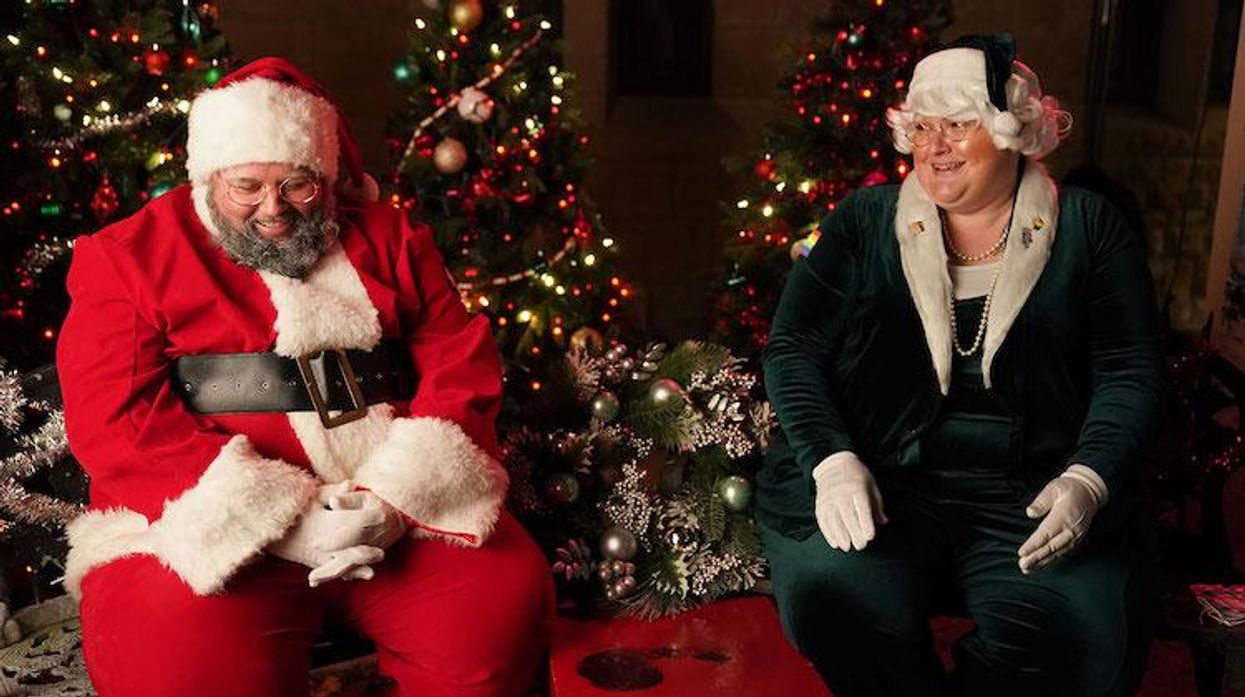



























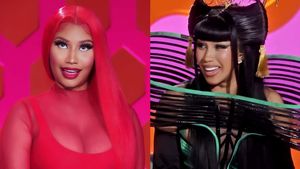


















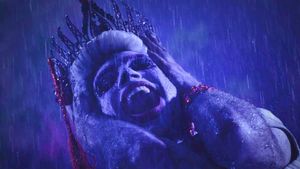




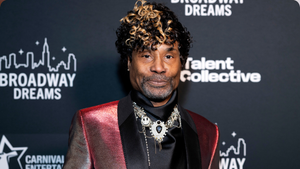



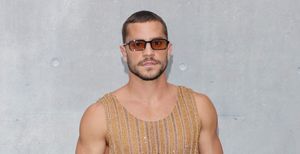











Charlie Kirk DID say stoning gay people was the 'perfect law' — and these other heinous quotes